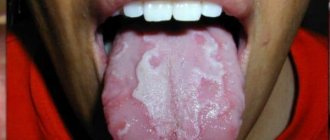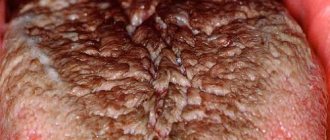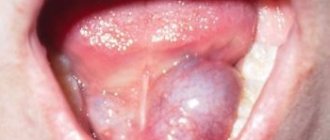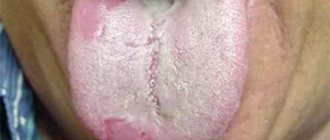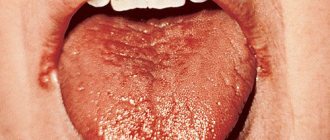The language spoken by a particular people is an integral part of its culture. It is a unique system that influences the consciousness of people who speak it. It is believed that every nation has key words that are used more often than others and reflect the worldview of people as a whole.
Photo: Pixabay.com
There are many languages in the world - more than 7000. All linguistic diversity can be combined into four types:
- Amorphous languages, that is, formless.
The words here consist of one root, there are no suffixes, prefixes or endings. Most of them are short and monosyllabic. These languages include Chinese, Thai, Vietnamese and many other languages of Southeast Asia. - Agglutinating tongues.
Here the words are actively changing. Affixes are added one after another to the unchanged root. Moreover, each of them has only one meaning. Thus, words in this type of language resemble trains, the carriages of which are represented by numerous suffixes. This group includes all Turkic languages, as well as Japanese, Korean and Georgian. - Inflected languages.
There are many declensions and conjugations, and prefixes, suffixes and endings are actively used. Words almost never consist of one root; they are longer than in the first group, but shorter than in the second. These languages include Slavic, Romance, Germanic, and Finnish. - Polysynthetic languages.
In this case, the word often contains the meaning of an entire sentence, and it is not so easy to divide it into its component parts. Such languages are rare and quite difficult to learn. These include Chukchi-Kamchatka, Eskimo-Aleut, as well as many languages of the Indians of North America.
This division is quite arbitrary. Each language is unique in its own way. Also, people who speak it have their own characteristics. However, despite such a variety of languages, the majority of the population (66%) speaks only 40 of them. In turn, among them there are leaders in their prevalence.
We present to your attention the ranking of the 15 most common languages in the world. It is compiled according to the Ethnologue reference book for 2020. When compiling this rating, the total indicator of the number of speakers for whom the language in question is native and those for whom it is a second language was taken into account.
| Language | Number of media |
| 1. English | 1.268 billion speakers |
| 2. Chinese | 1.12 billion speakers |
| 3. Hindi | 637.3 million speakers |
| 4. Spanish | 537.9 million speakers |
| 5. French | 276.6 million speakers |
| 6. Arabic | 274 million speakers |
| 7. Bengali | 265.2 million speakers |
| 8. Russian | 258 million speakers |
| 9. Portuguese | 252.2 million speakers |
| 10. Indonesian | 199 million speakers |
| 11. Urdu | 170.6 million speakers |
| 12. German | 131.6 million speakers |
| 13. Japanese | 126.4 million speakers |
| 14. Swahili | 98.5 million speakers |
| 15. Marathi | 95.3 million speakers |
Treatment
Therapy is divided into local and systemic.
Topically used:
- 2% soda or a slightly pink solution of potassium permanganate - rinse the mouth 4-5 times a day;
- preparations based on hexinidine (Orasept, Stomatidin) - apply for 4-5 minutes 5-6 times a day;
- 1% solution of clotrimazole - rinse the mouth 2-3 times a day.
Systemic treatment includes:
- antifungal therapy - fluconazole 0.05 g or ketoconazole 0.2 g per day;
- drugs to strengthen the immune system - interferon, echinacea extract, multivitamin complexes;
- analgesic therapy – dikloberl or movalis, 1 capsule 2 times a day.
A diet is also recommended: limiting the consumption of foods high in starch, flour, sweet, spicy, salty, smoked and hot foods.
Organ diseases
Our language fully reflects the state of our health. Eastern medicine divides this organ into three main parts, reflecting our organs:
- the back is the lower part of the human body;
- the body of the tongue reflects the middle part of the body;
- end of the upper part.
However, there is another technique in which organs are separated on the tongue. The front part diagnoses pathologies of the digestive system, the middle gives a complete picture of the condition of the stomach, pancreas and spleen. The root diagnoses intestinal pathologies. By looking at the side parts, you can easily determine how the kidneys function.
The tongue of a healthy person is an indicator of the state of the body
The tongue is not just an organ of the digestive system, but also a specific indicator that unmistakably tells a person how the body is feeling at the moment, whether it needs special protection or not.
Often it is the language that attracts attention and makes you think about whether it’s time to see a doctor, despite the fact that your general condition and well-being in general do not cause concern.
It is by the condition of the tongue that many diseases are determined; even at a doctor’s appointment, examination of the tongue acts as one of the stages of diagnosis.
Anatomy and functions.
Human language by its nature is a muscular organ.
nom without bones. On top it is covered with a mucous membrane. Tasks and functions it performs:
- participates in the functioning of the speech apparatus;
- determines the taste of the food a person eats;
- is part of the digestive system - it performs primary processing of food, mixes it and forms a food bolus, which pushes further into the esophagus.
The structure of the language is simple but interesting. This organ is divided into two parts - the back - the root and the front - the body. The upper surface is also called the back and has a velvety structure.
The tongue is covered with papillae, which are divided into 4 groups responsible for recognizing tastes. That is why, with a burn or other injuries to the tongue, a person temporarily loses the ability to perceive one or more tastes.
What does a healthy tongue look like?
A healthy tongue without any pathologies should be pink and have a fold that runs along its entire surface. Also, the tongue in its normal state is soft to the touch and does not cause discomfort if it is moved while talking or eating. Taste buds are usually clearly distinguishable and pronounced.
A small amount of white coating is normal for a healthy tongue. Its quantity may vary depending on the season. Also, the presence of a thin whitish coating indicates a minor pathology that develops slowly and has a local location.
Plaque can lead to the appearance of:
Caries, gingivitis, gum pathologies, candidiasis. Problems with the gastrointestinal tract, food allergies and lack of vitamins are the root cause of the formation of yellow or white plaque. Plaque thickening may indicate diseases, including chronic ones, requiring immediate consultation with a specialist.
All the colors of the rainbow in your mouth.
Everyone knows that by the color of the tongue one can easily determine that something is wrong with the body, since some diseases are “reflected” on it by the characteristic color of the plaque. The most common of them:
- measles or flu, high fever - burgundy coating;
- lack of nutrition, anemia, heart failure - pale tongue;
- diseases of the blood or respiratory tract - purple plaque;
- problems with the gastrointestinal tract, smoking, jaundice - yellow or gray plaque;
- diseases of the liver, spleen, dysentery, abscesses, advanced viral diseases - black plaque;
- kidney disease - blue plaque;
- blood circulation disorders, heavy metal poisoning, scurvy - blue plaque;
- dehydration, fungal infection - white tongue;
- diseases of the oral cavity - dark brown plaque.
That is why it is important to pay attention to details, as they can tell more about health than the person himself.
Plaque formation.
The presence of a coating on the tongue of an unhealthy color indicates that changes are occurring in some specific organ or even group; there is a problem that requires attention and medical intervention. In order to understand exactly what is happening, you need to know the specific location of the plaque.
Most often, the color of the tongue and plaque differs, which makes it possible to determine the approximate system of organs in need of treatment.
The thickness of the plaque shows the severity of the problem - the thicker it is, the faster changes occur that are harmful to human health.
If the white coating forms in a thick layer, the gastrointestinal tract suffers, and the likelihood of constipation increases. If it is located in a thin layer on the tip of the tongue, the main problem is gastritis. At the same time, a thick layer on the tip of the tongue indicates complications with gastritis or that the disease has become chronic.
If plaque is located at the root of the tongue, then this is the first sign of inflammatory processes in the intestines
. If the plaque is gray and concentrated at the root of the tongue, then one can judge about chronic diseases of the intestines and stomach, such as increased
acidity.
Plaque can also be yellow or black - this is a reason to think about the health of internal organs, including:
- spleen;
- gallbladder;
- liver.
A sign of serious pathology is a long period of persistence of plaque on the tongue. If the plaque lasts only a few hours or a day, then in this case it is necessary to take into account the fact that there is an imbalance in the microbial balance in the oral cavity.
Most likely, the cause is gastrointestinal problems, so consultation with a specialist in this field is necessary to prevent the situation from worsening.
It is important to remember that a white coating on the tongue may also indicate respiratory diseases, such as pneumonia.
This disease can be identified by the gradual darkening of plaque and its location along the edges of the tongue and on its front part. If darkening does not occur, then with a similar placement of plaque, we can talk about pneumonia.
Tubercles at the base.
The appearance of tubercles at the base of the root of the tongue may indicate enlargement of the tonsils. You can correct the situation at home by rinsing your nose with special means, but it would be best to consult a doctor, since a full examination will reveal the exact cause of their appearance.
Formation of cracks.
The tongue does not always have a perfectly flat surface. You can often see cracks on it. If there are many of them, then such a language is called “geographical”; it may indicate that problems with the gastrointestinal tract have become chronic, as well as that mental disorders are possible.
In addition, many cracks in the tongue indicate:
- disturbances in the functioning of parts of the brain;
- presence of an allergic reaction;
- somatic disorders in the body.
Also, if there are cracks in the tongue, you should consult a doctor, as pathology of the hypoglossal nerve is likely.
It can be recognized if, along with cracks, there is a deviation of the tongue to the side. Based on the location of the cracks, the side on which the organs are under stress or where there is a disease is diagnosed.
For example, if they are located exactly in the middle of the tongue, then there is a high probability of problems with the spine. A curved crack located at the root of the tongue indicates problems in the lumbar region, at the tip of the tongue, or in the cervical region.
Ulcers and wounds on the tongue.
Ulcers on the surface of the tongue are not uncommon and can occur for a variety of reasons:
- tongue injury;
- burn;
- dental problems in the oral cavity;
- Crohn's disease and other gastrointestinal problems.
Usually the ulcers are small in size, but present in large numbers, so they cause a lot of inconvenience and discomfort to a person. It is impossible to ignore wounds and ulcers on the tongue, especially if they arise without a reason.
One of the types of disease in which the body gives such a symptom is syphilis, therefore, treatment should be immediate and professional. However, in the case of this disease, the ulcer will be present on the tongue in the singular.
Its surface is bright red, shiny and hard. In addition, it is completely painless. The formation of warts at the root of the tongue or on its sides is a sign of HIV, and flat ulcers on the tip of the tongue, the sides or along the midline indicate the onset of tuberculosis.
There is another division in which the place on the tongue is assigned to an organ. So the front part of the surface of the tongue tells about the health of the liver, heart and lungs, the middle gives an understanding of how the stomach, pancreas and spleen work. The root of the tongue helps in diagnosing the intestines. The sides of the tongue allow you to learn how the kidneys work.
Thus, the tongue is a universal way to quickly and accurately diagnose the functioning of internal organs. Its significance for a person is not limited to the processing of food and participation in the formation of speech, since the tongue is a real doctor who will always help to recognize the most complex disease.
Emerging changes should be taken into account, as they indicate the emergence and development of pathologies and changes in the body. It is necessary not only to notice the signs of the disease in a timely manner, but also to promptly take measures to eliminate it - consult a doctor.
Spots on the tongue:
The phenomenon of geographic language is very common in children. In medicine, this phenomenon is called benign migratory glossitis.
A characteristic feature is irregularly shaped spots with no papillae. Language becomes like a geographical map. This is where the name comes from.
It is important that the spots constantly change their location: they appear in one place, and then disappear and appear in another.
Geographic tongue is a harmless condition that is inherited. Some babies are born with a cracked tongue.
The spots may be white or red, rough or smooth. As a rule, they are painless. Although eating hot, spicy, cold food can cause a feeling of discomfort in the child.
During fasting and during the transition period to a raw food diet, the body is cleansed and toxins are eliminated. A large number of them are excreted through the oral mucosa and especially through the tongue. Cleaning your tongue not only maintains hygiene, but also helps maintain a strong sense of taste. The tongue is responsible for the perception of taste. A pure language perceives it more clearly. You will discover new nuances of taste, and, oddly enough, you may start eating less. The need for food not only satisfies hunger, but also saturates the consciousness with tastes. When taste perception is dulled, it leads to overeating and excess weight. Bacteria and fungi growing on the tongue cause many oral problems and various general health problems. This is a favorable environment for microorganisms that cause inflammatory processes and poison the body. In addition, as bacteria decompose, they release volatile sulfur compounds on the back of the tongue. These molecules cause 50-80% of all cases of bad breath
Regular tongue cleaning helps:
– get rid of a huge number of pathogenic microbes that cause various diseases of the oral cavity – get rid of bad breath;
– enrich taste sensations that are dulled due to a coating on the tongue
– through massage of the tongue receptors, activate and stimulate the work of internal organs.
– regular tongue cleaning reduces the number of pathogenic bacteria in the oral cavity by 10 times;
– reduces the formation of tartar by 33%
– thanks to brushing not only your teeth, but also your tongue, bad breath is reduced by 85%; and when brushing your teeth - only 25%.
Cleaning your tongue is very simple and you don’t need any special tools; you can use a toothbrush, a regular spoon, or the blunt side of a knife to clean it.
The procedure for cleaning your tongue is short and simple, but it will give you pleasure and health.
Source: https://viphutti.ru/%D0%B0%D0%BD%D0%B0%D1%82%D0%BE%D0%BC%D0%B8%D1%8F-%D1%81%D1% 82%D1%80%D0%BE%D0%B5%D0%BD%D0%B8%D0%B5-%D1%87%D0%B5%D0%BB%D0%BE%D0%B2%D0%B5 %D0%BA%D0%B0/%D1%8F%D0%B7%D1%8B%D0%BA-%D1%87%D0%B5%D0%BB%D0%BE%D0%B2%D0%B5 %D0%BA%D0%B0-%D0%B8%D0%BD%D0%B4%D0%B8%D0%BA%D0%B0%D1%82%D0%BE%D1%80-%D0%B7 %D0%B4%D0%BE%D1%80%D0%BE%D0%B2%D1%8C%D1%8F/
Reasons for development
Candidiasis glossitis can develop as a result of the pathogen entering from the outside or as a result of the proliferation of fungi already living in the mouth. In the first case, the cause may be kissing an infected person, using his toothbrush, eating from poorly washed dishes, and so on. In the second case, the reason for the proliferation of fungi is a decrease in immunity, which can be caused by:
- pregnancy;
- stress and overwork;
- childhood or old age;
- metabolic disorders;
- flu, mononucleosis, AIDS;
- autoimmune diseases;
- neoplasms;
- undergoing a course of treatment with immunosuppressants and glucocorticosteroids;
- alcoholism or smoking;
- hypovitaminosis.
